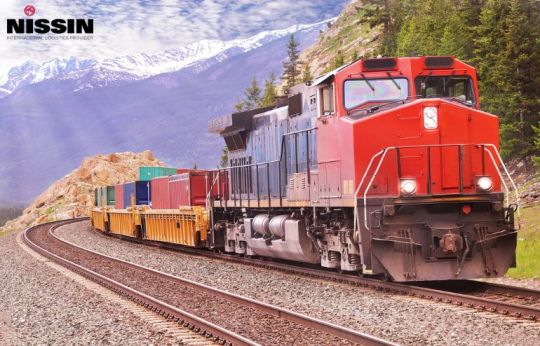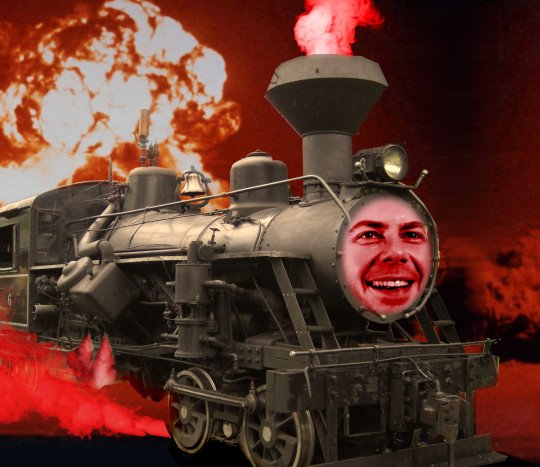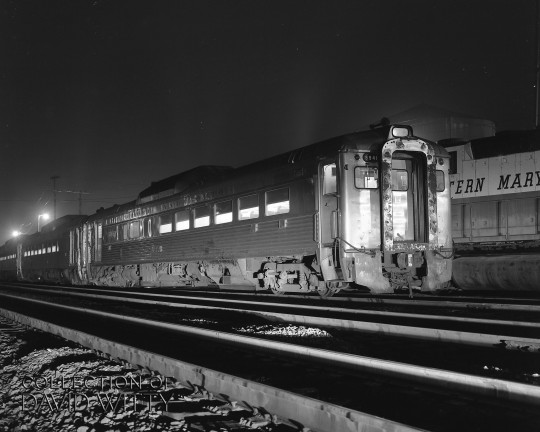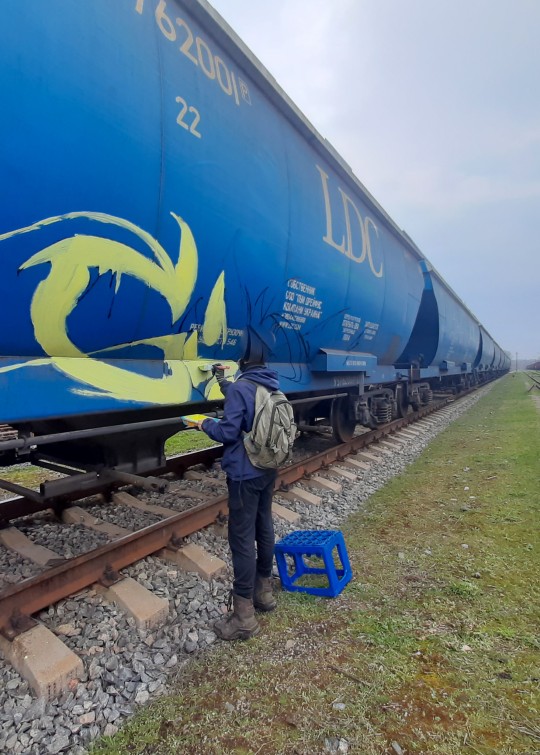#train freight transport
Explore tagged Tumblr posts
Text
PROS AND CONS OF VARIOUS RAIL FREIGHT CAR TYPES FOR COMMODITIES

Rail transportation plays a key role, facilitating the efficient movement of goods across vast distances. From raw materials to finished products, efficient transportation of these goods is a crucial component of a thriving economy. Among the myriad options available, various rail freight cars emerge as a reliable and economical solution for hauling commodities. However, like any mode of transportation, each rail freight car type presents its pros and cons, requiring careful consideration to optimize the shipping process.
Choosing the appropriate train freight car is a critical decision that can significantly impact operational costs, transit times, and the overall effectiveness of the supply chain. By understanding the strengths and weaknesses of various freight car types, businesses can make informed choices and leverage the advantages that best align with their specific transportation needs.
The Different Types of Rail Freight
Boxcars
Boxcars are the most recognizable types of rail freight car. These enclosed rectangular cars offer maximum protection from the elements and security for your cargo. They’re ideal for transporting dry, palletized goods like machinery, electronics, and consumer products.
Pros:
Secure and weatherproof
Versatile for various palletized goods
Large capacity
Cons:
Not suitable for bulk materials
Loading and unloading can be time-consuming
Hopper Cars
Hopper cars are designed for bulk commodities like grain, coal, and sand. These open-top cars feature hopper doors at the bottom for easy unloading. Some variations include covered hoppers for weather-sensitive materials like fertilizer or plastics.
Pros:
Efficient loading and unloading of bulk materials
Suitable for heavy cargo
Some variants offer weather protection
Cons:
Not ideal for bagged or palletized goods
Can be susceptible to product loss during transit
Tank Cars
Tank cars are cylindrical steel containers mounted on a railcar frame. They are specifically designed to transport liquids like oil, chemicals, and food products. They have specialized linings and pressurization systems to ensure safe and secure transport.
Pros:
Secure and leak-proof for liquid cargo
Some variations are temperature-controlled for sensitive products
Cons:
Limited to transporting liquids
Require specific loading and unloading facilities
Flatcars
Flatcars are open-frame cars ideal for oversized or odd-shaped cargo that wouldn’t fit inside a boxcar. They can be secured with straps or chains for safe transport. Examples of goods transported on flatcars include construction equipment, vehicles, and large machinery.
Pros:
Versatile for oversized or odd-shaped cargo
It can be loaded from multiple sides
Cons:
No weather protection for cargo
Requires secure fastening of the load
Choosing the Right Rail Freight Car
Selecting the optimal freight car hinges on your specific commodity. Here are some key factors to consider:
The type of commodity: Boxcars are ideal for dry goods, while tank cars are necessary for liquids.
Weight and dimensions: Ensure the car’s capacity can accommodate your cargo’s weight and size.
Protection needs: Does your cargo require weather protection or temperature control?
Loading and unloading facilities: Consider the availability of specialized equipment for specific car types.
Get Your Rail Freight Rolling with Nissin Belgium
As businesses navigate the complexities of train freight transportation, partnering with a reliable logistics provider like Nissin Belgium can be a game-changer. Our team of experienced logistics specialists can help you choose the most suitable freight car for your specific needs. We have a vast network of partners across the globe, ensuring efficient and cost-effective transportation of your cargo.
To discuss your logistics requirements, contact us at + 32 2 751 44 99 or write to us at [email protected].
0 notes
Text

#onlyfr8love#fr8#russia#freight#graffiti#freight train graffiti#fr8graffiti#fr8train#freight heaven#russian freight graffiti#fr8spotting#freight transport#freight graffiti#freight bench#saber photography
19 notes
·
View notes
Text

Regional Transportation Authority - 16th Street
RTA SW1 No. 2 rolls through the work zone at 16th Street Tower, in April 1987. At this time, the CTA Red Line tunnel was being bored, Clark Street was being rebuilt with the removal of the bridge over the C&WI and the C&WI's depressed right-of-way was filled in.
#rta#regional transportation authority#1987#trains#freight train#passenger train#history#chicago#illinois
36 notes
·
View notes
Text

Class 66 66652 on its way to Margam from Dee Marsh Sidings with Cement Containers. Taken Thursday 4th of October. Was late coming through which in turn delayed my train to uni lol. Class 66s are nicknamed Sheds as they look like sheds or Ying Yings from the sound of the EMD engines in them.
#trains#diesel#class 66#diesel train#trainspotting#train spotting#uk railways#british railways#freight transportation
8 notes
·
View notes
Text

Erm, idk, more train stuff, Zarnesti [23.08.24]
#photooftheday#photography#photographers on tumblr#original photographers#photoblog#travel photography#travel#transport#train station#tracks#train#train travel#train tracks#freight
13 notes
·
View notes
Text
"California just cracked down on pollution from transportation in two major moves, part of an effort to improve air quality and cut carbon emissions at the same time.
On Friday, the California Air Resources Board unanimously approved a rule that would ban the sale of diesel big rigs in the state by 2036. The mandate, which will apply to about 1.8 million trucks — including those operated by Amazon, UPS, and the U.S. Postal Service — is reportedly the first in the world to require trucks to ditch internal combustion engines. The news came one day after California became the first state to adopt standards to limit pollution from trains.
Trucks and Diesel
The regulations are intended to improve air quality and trim carbon emissions from transportation, the source of about half the state’s greenhouse gases. Trucks and trains spew diesel exhaust, full of soot that contains more than 40 cancer-causing substances, responsible for an estimated 70 percent of Californian’s cancer risk from air pollution.
The trucking rule requires school buses and garbage trucks to be emissions-free within four years. By 2042, all trucks will be required to be “zero-emission,” meaning there’s no pollution coming out of their tailpipes. The deadline comes sooner for drayage trucks, which transport cargo from ports and railyards to warehouses — typically short routes that require less battery range. New drayage trucks must be “zero-emission” beginning next year, with the rule applying to all drayage trucks on the road in 2035.
Currently, medium and heavy-duty vehicles account for a fifth of greenhouse gas emissions statewide. In August, California clamped down on pollution from passenger vehicles with a plan to end the sale of new gas-powered cars in the state by 2035.
People breathing pollution from freeways and warehouse hubs have long called for stricter air standards. In the port cities of Long Beach and Los Angeles, some 6,000 trucks pass through every day, exposing residents to high levels of ozone and particulate matter, pollutants linked with a range of problems including respiratory conditions and cardiovascular disease. Long Beach residents who live the closest to ports and freeways have a life expectancy about 14 years shorter compared to people who live further away...
Trains and Locomotives
According to the new rules, the state is banning locomotive engines that are more than 23 years old by 2030. It also bans trains from idling for more than 30 minutes, provided that they are equipped with an engine that can shut off automatically.
The stage for the rule was set by a single line buried in the Biden administration’s proposed auto emissions rules, in which the Environmental Protection Agency said it was considering allowing states to regulate locomotives. Still, California’s new rules may spark a legal battle with the rail industry, which argues that the state doesn’t have the authority to make such sweeping changes.
Though railroads only account for about 2 percent of the country’s carbon emissions from transportation, switching to trains powered by batteries or hydrogen fuel cells would provide some benefits in the effort to tackle climate change. The public health gains would be even bigger: The California Air Resources Board estimates its new rules for trains, passed on Thursday, would lower cancer risk in neighborhoods near rail yards by more than 90 percent.
“This is an absolutely transformative rule to clean our air and mitigate climate change,” Liane Randolph, the chair of the air quality board, said ahead of the vote on the trucking rules on Friday. “We all know there’s a lot of challenges, but those challenges aren’t going to be tackled unless we move forward … if not now, when?”"
-via The Grist, 4/28/23
#united states#california#sustainability#greenhouse gasses#carbon emissions#transportation#diesel#trains#freight train#locomotive#gavin newsom#epa#environment#cw cancer#carcinogens#public health#environmental justice#environmental racism#good news#hope
124 notes
·
View notes
Text

Here's a neat little shortline operation in Iowa, the Iowa Traction Railway. They operate entirely electrically on over 100 year old electric locomotives. Incase anyone who isn't already big on trains sees this; electric trains have been a thing since before diesel or gas trains were big and the US used to have 91% of all the electric rail in the world! (though, that only made up 1% of the network). This line used to be an interurban passenger operation, but pivoted to freight and survived even with electric operations.
Anyway, I spent a day railfanning them with my dad back in March of last year. In this first photo we see the crew of ITAR 50 (Blt. 1920) looking back on a cut of cars on Black and White film.

Here is 50 pulling out an old Southern Pacific boxcar from the interchange for a customer.

They spot it at the customer, drop it off, and pull out. Clean and simple.

On one end of the line, now only used for storage, a semaphore is seen permanently in the yellow, "approach", position. This signal has been out of use for many a moon, but still stands as a testament to how busy the line once was, not just for freight, but for passenger.
All photos by me, shot on film, have a nice day everyone :)
#film photography#filmisnotdead#vintage#trains#railfanning#rail#railroad#interurban#if i could bring back one type of rail service it’s interurbans#electric vehicles#iowa#35mm#photographers on tumblr#photography#railtransport#railway#freight transportation#black and white
3 notes
·
View notes
Text
After Ohio rail disaster, Buttigieg is silent on restoring the safety standards Trump repealed

When a freight train carrying toxic chemicals derailed near East Palestine, Ohio, bursting into flame and sending up clouds of poisonous vinyl chloride smoke and gas, our immediate concerns were for the people in harm’s way and the train crew:
https://www.nytimes.com/2023/02/04/us/train-derailment-fire-palestine-ohio.html
If you’d like an essay-formatted version of this post to read or share, here’s a link to it on pluralistic.net, my surveillance-free, ad-free, tracker-free blog:
https://pluralistic.net/2023/02/11/dinah-wont-you-blow/#ecp
But those immediate concerns were soon joined by a broader set of worries: that the entire rail industry presented a systematic danger, and the Ohio derailment was a symptom of a much deeper pathology that endangered anyone who lives near one of the rail corridors that crisscross America.
The rail industry is the poster child for corporate power, and rail barons were among the first targets of Gilded Age trustbusters who saw the rail monopolies as a threat to the prosperity and wellbeing of Americans, as well as the integrity of the American political system itself.
40 years of neoliberal “consumer welfare” antitrust — starting with Reagan and continuing through every administration since — has seen the American rail sector achieve levels of concentration that meet and exceed the corrupt, untenable degree of the late 19th century.
Like the original rail barons, the current crop (including the self-styled cuddly billionaire Warren Buffett), have gutted rail investment, skirted on safety, maimed and abused their workforce, smashed their unions, and placed the entire US supply chain in a state of brittle precarity:
https://pluralistic.net/2022/02/04/up-your-nose/#rail-barons
Like all monopolists, the rail industry has been able to capture its regulators, trampling evidence-based policy and replacing it with rules that benefit shareholders at the expense of the public, labor, and customers.
https://doctorow.medium.com/regulatory-capture-59b2013e2526
This regulatory capture is an inevitable consequence of market concentration. When an industry is composed of dozens of small- and medium-sized firms, they are unable to converge on a single story about which rules regulators should favor them with: some of those companies will want things the others don’t, and each will vie to produce evidence disconfirming the others’ claims.
But when an industry dwindles to a handful of cozy giants whose C-suites are stuffed with company-hopping executives who’ve done time at every major company in the sector, they converge on a single fairy tale about the best way to regulate their industry, and convert their regulators’ truth-seeking exercises into rigged auctions that they handily win:
https://locusmag.com/2022/03/cory-doctorow-vertically-challenged/
That’s what happened during the Trump years, when rail lobbyists secured the repeal of a long-overdue, hard-won safety regulation that would have required rail companies to replace the Civil-War-era brakes on their rolling stock with modern electronically controlled pneumatic brakes (ECPs):
https://jacobin.com/2023/02/rail-companies-safety-rules-ohio-derailment-brake-sytems-regulations
The repeal cost millions in lobbying dollars, but it was worth it. Shortly after the ECP rule was scrapped, Norfolk Southern handed millions in bonuses to its execs and did billions in stock buybacks, while laying offf thousands of workers:
https://www.fool.com/investing/2018/10/25/norfolk-southern-implements-massive-buyback-progra.aspx
Elections, we’re told, have consequences. After Biden won the 2020 presidential election, he made a string of excellent appointments — people like FTC chair Lina Khan, who hit the ground running with detailed plans for making sweeping, consequential changes that would blunt corporate power, reverse-Trump era abuses, and correct the dysfunctions that created a political base for Trump:
https://www.eff.org/deeplinks/2021/08/party-its-1979-og-antitrust-back-baby
But other Biden appointees arrive in office with much less ambition. Transportation Secretary Pete Buttigieg has spent his tenure as King Log, failing to take action on spiraling airline cancellations, confining his major enforcement action to fining foreign airlines while ignoring the out-of-control abuses of America’s domestic carriers, except for the also-ran airline Frontier, which accounts for less than 2% of domestic travel:
https://pluralistic.net/2023/01/16/for-petes-sake/#unfair-and-deceptive
There are striking similarities between the structural defects in the airlines and the rail companies: both are highly concentrated sectors who have laid off senior staff, attacked unions, and blown billions in public money on stock buybacks and executive bonuses, even as their service degraded.
Both industries have been sharply criticized by experts and industry veterans, who’ve called for specific regulation. In the case of the airlines, SWA pilots and flight attendants had sounded the alarm about antiquated scheduling systems; for the rail companies, it’s experts like Grady Cothen, formerly a top safety expert at the Federal Railroad Administration (FRA), who told Congress that without action on braking systems, “[there] will be more derailments, more releases of hazardous materials, more communities impacted”:
https://www.congress.gov/event/117th-congress/house-event/LC69424/text?s=1&r=9
Despite these warnings, and despite the near-misses and smaller disasters that led up to the 100-foot-tall fireball over Ohio, Buttigieg’s DOT has not moved to reinstate the Obama-era brake safety rule, deferring to the monopoly rail owners self-serving claim that there is no need for such a move:
https://jacobin.com/2023/02/department-of-transportation-train-brake-regulation-ohio-derailment/
Indeed, the FRA is currently considering a rule that would further weaken braking rules, reducing obligations to inspect, test and certify braking systems:
https://www.regulations.gov/document/FRA-2019-0072-0005
The rail labor unions — the best source of independent expertise on the daily operation of the freight system — say that this would be a disaster: “Following through with a final rule would only deliver yet another financial windfall to rail carriers by eliminating inspections, testing and repairs, and deferring routine maintenance”:
https://www.goiam.org/news/territories/tcu-union/carmen-division-tcu/rail-labor-files-joint-comments-on-fras-nprm-2/
Serving as Transportation Secretary to the President of the United States of America makes you one of the most powerful people in the history of the human race. The Secretary’s powers, while not unlimited, are extensive. The American people need a DoT that works for them, not one that weakens safety rules:
https://pluralistic.net/2023/01/10/the-courage-to-govern/#whos-in-charge
Image: Gage Skidmore (modified) https://commons.wikimedia.org/wiki/File:Pete_Buttigieg_January_2020.jpg
CC BY-SA 2.0 https://creativecommons.org/licenses/by-sa/2.0/deed.en
James St John (modified) https://www.flickr.com/photos/jsjgeology/27110172823/
CC BY 2.0 https://creativecommons.org/licenses/by/2.0/
This week (Feb 13–17), I’ll be in Australia, touring my book Chokepoint Capitalism with my co-author, Rebecca Giblin. We’re doing a remote event for NZ tomorrow (Feb 13). Next are Melbourne (Feb 14), Sydney (Feb 15) and Canberra (Feb 16/17). More tickets just released for Sydney!
[Image ID: A locomotive steaming away from a nuclear explosion. The face of the logo has been replaced with Transportation Secretary Pete Buttigieg's, in the style of Thomas the Tank Engine.]
#pluralistic#railroads#trains#freight#department of transport#pete buttigieg#monopolies#transport#dot#federal railroad administration#ohio#fra#ecp#electronically controlled pneumatic brakes
84 notes
·
View notes
Text
Saturday Movie Night: Discovering Railways (1977)
youtube
A large part of BTF's remit was to inform the public of the great contribution BR made to the life of the nation. They were always keen to speak the language of their audience, so this film, designed to get the kids on-side, is fronted by Peter Purves, of Blue Peter fame. In just ten minutes, Purves takes us on a rapid-but-comprehensive tour of what BR was all about in the 70s, with brief detours to where it'd come from, and where it hoped to be going in the 80s and beyond.
#british railways#british rail#discovering railways#1977#british transport films#modernization#diesel locomotives#electric locomotives#passenger train#freight train#peter purves#blue peter#real true railway stuff#ttte plot inspiration#saturday movie night#youtube#Youtube
4 notes
·
View notes
Photo

B&O 9941 At Brunswick
Baltimore & Ohio Budd RDC #9941 idles at the roundhouse in Brunswick Yard, Brunswick MD, July 29, 1977.
#commuter train#b&o#baltimore & ohio#mdot#maryland department of transportation#wm#western maryland#1977#washington dc#trains#passenger train#freight train#history#brunswick#maryland
61 notes
·
View notes
Text
Preventing Distracted Driving for Truckers
Let’s talk about something serious today—distracted driving. We all know the roads can be unpredictable, and when you’re hauling 80,000 pounds of freight, every second counts. So let’s get real about the hidden dangers out there and how distracted driving could be putting you, and everyone else, at risk. What Is Distracted Driving, Really? You’ve probably heard this term a million times, but…

View On WordPress
#business#cab organization truckers#cash flow management#distracted driving#distracted driving consequences#distracted driving prevention#driver assistance technology#eating while driving truckers#Freight#freight industry#Freight Revenue Consultants#GPS distraction truckers#highway safety tips#lane departure warning trucks#logistics#mindfulness driving truckers#mobile device use truckers#professional truck driving safety#reduce distracted driving#road safety for truckers#Safety#safety tips for truckers#small carriers#technology#Transportation#truck accident risk#truck driver distractions#truck driver legal issues#truck driver safety#Truck Driver Training
2 notes
·
View notes
Text
Moving Magic: Transforming Removals into a Smooth and Exciting Experience

Moving to a new home can be both thrilling and daunting. The excitement of a new beginning often mingles with the stress of organizing a seamless move. But fear not, as we unveil the moving magic that can transform your removal process into a smooth and exciting experience. From meticulous planning to expert tips, let's dive into the world of relocation with confidence and ease.
1. The Art of Planning: Crafting Your Moving Blueprint
Embark on your moving journey by creating a detailed plan. Organize your tasks into a checklist, prioritizing essential aspects such as hiring a moving company, gathering packing supplies, and notifying relevant parties about your move. This foundational step ensures a structured approach, setting the tone for a stress-free relocation.
2. Mastering the Packing Puzzle: Smart Tips for Efficiency
Packing is an art, and mastering it can significantly impact your moving experience. Begin by decluttering your belongings; donate or discard items you no longer need. Optimize space by using quality packing materials and labeling boxes with their contents. This not only simplifies unpacking but also safeguards your valuables during transit.
3. Choosing the Right Moving Partner: A Key to Success
Selecting a reliable moving company is akin to finding the perfect dance partner for your moving journey. Research different companies, read reviews, and obtain quotes. Ensure they are licensed and insured, offering the services you require. A trusted moving partner can turn the complex chore of relocation into a seamless, well-coordinated dance.
For a hassle-free move, consider reaching out to Nissin Belgium. With a reputation for reliability and efficiency, they can be your ideal moving partner, ensuring a smooth transition to your new home.
4. Budgeting Brilliance: Managing Costs Without Compromise
Moving doesn't have to break the bank. Craft a realistic budget that covers all aspects, including packing materials, moving services, and potential unforeseen expenses. Prioritize your spending, allocating more funds to crucial elements like secure transportation and professional assistance. This strategic approach ensures a cost-effective move without compromising on quality.
5. The Psychology of Unpacking: Turning Chaos into Comfort
Unpacking is often the overlooked cousin of packing, yet it plays a vital role in the overall moving experience. Create a systematic unpacking plan, starting with essentials. This gradual approach helps in adjusting to the new space and turning the chaos of boxes into a comforting, familiar environment.
6. Embracing Technology: Apps and Tools for Effortless Moves
In the digital age, technology can be your ally in simplifying the moving process. Explore moving apps that offer features such as inventory management, task tracking, and even virtual floor planning. Leverage these tools to streamline your move and stay organized at every step.
7. Community Connection: Settling In with a Warm Welcome
Moving isn't just about changing your physical address; it's about embracing a new community. Engage with your neighbors, explore local amenities, and immerse yourself in the surroundings. A warm welcome can turn a new place into a home, making the entire moving experience not just smooth but exciting.
8. Eco-Friendly Moves: Reducing Your Carbon Footprint
In an era of environmental consciousness, consider making your move eco-friendly. Opt for recyclable packing materials, choose energy-efficient transportation options, and donate unwanted items to reduce waste. An eco-conscious move not only benefits the planet but also adds a positive vibe to your relocation story.
9. Personalized Touch: Adding Your Signature to the New Space
Transform your new house into a home by adding a personalized touch. Whether it's arranging furniture in a unique way or incorporating your favorite colors, infuse your personality into the space. This not only makes the move exciting but also creates a sense of belonging.
10. Celebrate the Journey: A Moving Milestone
As you settle into your new abode, take a moment to celebrate the journey. Reflect on the challenges you've overcome and the excitement of a fresh start. Share this milestone with friends and family, turning your moving experience into a cherished memory.
In conclusion, the magic of a smooth and exciting move lies in meticulous planning, efficient packing, choosing the right partners, managing costs wisely, and embracing the journey with a positive mindset. By incorporating these elements, you're not just moving; you're creating a new chapter filled with anticipation and joy. Cheers to the magic of moving!
#transportation#logistics services#train freight transport#ocean freight#logistics#nissin belgium#road transport#freight forwarder#freight forwarding#road shipping#removals
0 notes
Video
rn4-356 by George Hamlin Via Flickr: Old and new at Penn Central's former New Haven shop facility at Stamford, Connecticut on June 2, 1973. Note the steep track at left to access the main line, which is well above grade level at this location.
#ctdot#connecticut department of transportation#pc#penn central#1973#trains#passenger train#freight train#history#stamford#connecticut
30 notes
·
View notes
Text

Q: Where is this train going? A: To an atomic development laboratory.
#vintage advertising#railroads#cargo transportation#freight trains#sante fe railroad#sante fe system lines#vintage trains
11 notes
·
View notes
Text

Soon, it'll be officially Autumn.
With the end of Summer, comes the arrival of cooler weather and brilliant colors on the trees. But, we still have work to do under the sun. The afternoon freight from Bakersfield heading to Fresno will pass through communities like Putnamville on this quite pleasant day. Like the train, there's nothing to do but move forward into the changing seasons.
#digital illustration#kcvulpinestudios#life beside the tracks#diesel locomotives#freight train#freight transport#digital art#central valley#California#southern california#San Joaquin Valley#late summer#early autumn#boxcars#train graffiti#graffiti#grafitti on trains#Pac-Man#ghosts#dragon#trees#fall colors#warm day#procreate#tayasuisketches
11 notes
·
View notes
Text
Or did you think I do every train with normal paint?

#ukraine#graffiti#dpluos#europe#graffitiart#bombing#freight graffiti#graffito#freight train graffiti#art#fr8graff#fr8 graffiti#freight transport#freighttrain#fr8train#freight train#los angeles graffiti#graffity#graffiti art#graffiti on trains#train graffiti#trainspotting#train bombing#train writing#graffiti style writing#graffiti writing#writing#wild_style#anti style graffiti
24 notes
·
View notes